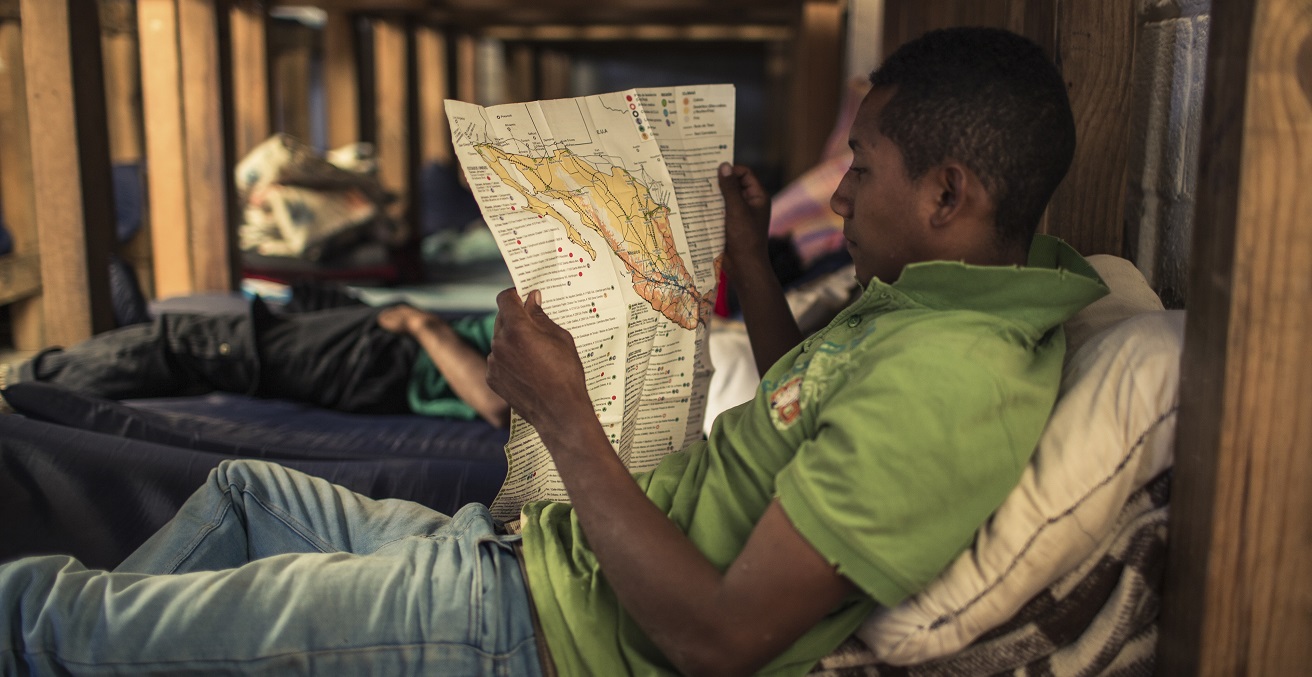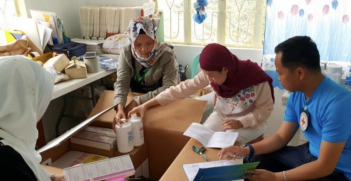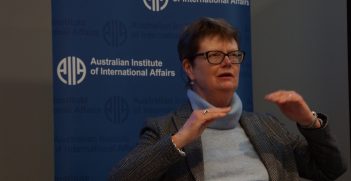Challenges on the Move: Legal Protections

People who are forced to leave their homes and communities, whether running for their lives or needing to find a better one, face uncertainty and potential persecution. What are the legal rights of these vulnerable groups?
There are many reasons why people choose, or are forced, to leave their homes. These may include a lack of employment or scarcity of health and education services in their countries of origin or the desire to reunite with family members already in other countries. Armed conflict and other violence will often be a significant driver; sadly, mass movements of civilians have often been one of the consequences of war.
What legal protections are available for these people on the move? At the universal level, there is no instrument specifically addressing all aspects of international migration and displacement in a comprehensive manner. Instead, the relevant framework is found in an extensive range of international conventions, regional treaties, bilateral agreements and national provisions.
Who is a migrant?
There is no universally accepted definition of a ‘migrant’ under international law. The International Committee of the Red Cross (ICRC)—like the rest of the International Red Cross and Red Crescent Movement—uses a deliberately broad definition of migrants that covers all people who leave or flee their country to go abroad to seek safer or better prospects. This definition recognises that migration typically involves a combination of choice and pressure. It focuses on capturing the full extent of humanitarian concerns related to migration and providing sufficient flexibility to address the often complex situations and vulnerabilities.
The definition can include stateless persons as well as workers, students and foreigners deemed irregular by public authorities. It also encompasses refugees and asylum seekers, who are defined in international and regional refugee instruments and certain national laws. The 1951 Convention Relating to the Status of Refugees defines a refugee as a person who, due to a well-founded fear of persecution, is outside of their country of nationality and unable or unwilling to return. An asylum seeker is defined as an individual who is seeking protection as a refugee but has not yet been officially recognised as such.
Like many migrants, an internally displaced person (IDP) is someone who has been forced to flee their home or place of habitual residence. However, IDPs are distinguished by the fact that they have not crossed an internationally recognised state border.
General legal protections
All migrants and IDPs enjoy protection as human beings under international human rights law. Depending upon their circumstances, they may also be protected under other bodies of law such as international criminal law, labour law, consular law and law of the sea.
In all situations, these people should also enjoy protection under the applicable domestic law. It is therefore imperative that national laws, regulations, policies and practices reflect international law and take into account other non-binding instruments and the jurisprudence of courts.
Specific legal protections
For refugees and asylum seekers, international refugee law—in particular the 1951 Refugee Convention—with the mandate of the Office of the United Nations High Commissioner for Refugees provides the main protection framework. For instance, it exempts refugees coming directly from a country of persecution from being punished on account of illegal entry or stay. There are then specific international instruments protecting certain categories of migrants, for example children, stateless persons and victims of trafficking.
For IDPs, the 1998 United Nations Guiding Principles on Internal Displacement, though not legally binding, provides a widely recognised international protection framework. Domestically, because IDPs remain in their home country, they should also hold the same rights and legal protections as all other citizens in that state (assuming that they are citizens themselves). However, their government may well be unable or unwilling to uphold these rights and protections; the sheer scale and complexity of an internal displacement situation can quickly overwhelm a state’s financial and technical resources. Accordingly, such situations require collective efforts, including support from humanitarian organisations and other civil society actors.
International humanitarian law
Individuals in all of these categories are protected by international humanitarian law (IHL) if they find themselves in a state involved in armed conflict. IHL, also known as the law of war, seeks to limit for humanitarian reasons the effects of armed conflict by protecting people (including displaced persons) who are not or who are no longer participating in the hostilities. IHL also protects people by regulating the methods of warfare.
Refugees receive special protections under IHL, in particular through the Fourth Geneva Convention and Additional Protocol I. For example, Article 73 of Additional Protocol I states that refugees must be regarded as protected persons in all circumstances and without any adverse distinction. This recognises refugees’ particular vulnerability as people in a foreign country at war.
Displaced persons also have a right to return in safety to their homes as soon as the reasons for their displacement cease to exist. Their property rights must also be respected.
IHL then has a range of general protections that apply to all civilians (provided they do not take a direct part in hostilities) including migrants and IDPs. All possible measures must be taken to ensure that displaced civilians have satisfactory conditions of shelter, hygiene, health, safety and nutrition, and that members of the same family are not separated. Rules requiring parties to a conflict to allow relief consignments to reach civilians in need also afford protection to displaced persons.
Preventing displacement
The rules of IHL can also play a very important part in preventing displacement from occurring in the first place. The Fourth Geneva Convention, the 1977 Additional Protocols and customary IHL rules expressly prohibit compelling civilians to leave their places of residence unless their security or imperative military reasons so demand. A widespread or systematic policy of displacement of civilians without such justification constitutes a crime against humanity.
Other relevant IHL rules which can prevent displacement include those prohibiting:
- direct or indiscriminate attacks on civilians and civilian objects;
- the pillage of civilians or civilian property;
- the use of human shields;
- the starvation of the civilian population and the destruction of objects indispensable to its survival such as crops, health facilities, water and power supplies or dwellings; and
- the collective punishment of the civilian population, including by destroying dwellings.
Compliance with the law in armed conflict would therefore go a long way towards preventing people from being forced to leave their homes. Respecting and ensuring respect for IHL is key to reducing the burgeoning figures of global displacement and protecting and assisting those people who are unavoidably displaced by war and other situations of violence.
Georgia Hinds is the International Committee of the Red Cross (ICRC) regional legal adviser for the Pacific.
Ahead of an upcoming issue of the ‘International Review of the Red Cross’ on migration and displacement, this article is part of series by the ICRC examining some of the humanitarian challenges faced by people on the move, whether they are internally displaced, refugees or migrants.
This article is published under a Creative Commons Licence and may be republished with attribution.





